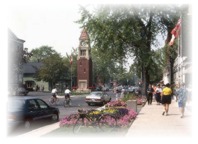Earthsense LLC, a Syracuse market research company, recently announced a new monthly survey of consumer attitudes about green products and companies called the Green Confidence Index, The index, which will also track consumers’ purchasing decisions, will provide subscribers with strategic marketing information on who buys Green and why, and how a company can position itself and its products to appeal to its customers, using Green to increase its competitiveness and the bottom line. 
 As a consumer, how can you determine whether you are being Green, or “Greenwashed”? Another company, Eco-Rate, helps consumers choose products and technologies that are Green, based on a rating system that measures efficiency, environmental impact, human health and financial feasibility. This Seattle startup researches thousands of products, and provides comparative rankings on a free online buying guide. The rankings take into account: efficiency of water and energy use; toxicity; lifecycle cost; and location of manufacture. The website also helps architects and builders choose eco-friendly products and processes, and can be used by companies and government agencies interested in greener purchasing policies.
As a consumer, how can you determine whether you are being Green, or “Greenwashed”? Another company, Eco-Rate, helps consumers choose products and technologies that are Green, based on a rating system that measures efficiency, environmental impact, human health and financial feasibility. This Seattle startup researches thousands of products, and provides comparative rankings on a free online buying guide. The rankings take into account: efficiency of water and energy use; toxicity; lifecycle cost; and location of manufacture. The website also helps architects and builders choose eco-friendly products and processes, and can be used by companies and government agencies interested in greener purchasing policies.
